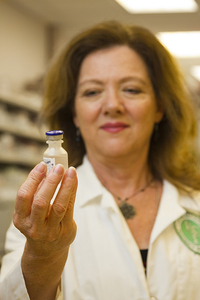Some Cancer Stats
Cancer is the second-leading cause of death in the United States, as reported by the Centers for Disease Control and Prevention. But the CDC’s categorization can be deceiving as it lumps all forms of cancer together, and in reality there is not one disease called cancer. Lung cancer is different from bladder cancer which is different from myeloma. There are upwards of a hundred different illnesses included in the broad cancer category.
Survival rates vary widely across cancer types. About 1.9 million cases of cancer are diagnosed in the US every year, and 18 million worldwide. Over 600,000 people die from cancer in the US (over 1 out of 5 deaths) and 9.6 million worldwide (1 out of 6 deaths). Cancer is the leading cause of death for Americans under age 65. The median age at diagnosis is 66 years. The most common type of cancer is breast cancer or skin cancer, depending on how you classify things – some epidemiologists separate melanoma from squamous cell skin cancer. Prostate cancer is also common, but breast and prostate cancers have high survival rates. The US government estimates 18 million cancer survivors live in the country today.
Estimated US deaths in 2024: 612,000.
Lifetime Risk of Developing Cancer: The National Cancer Institute says approximately 39.3 percent of Americans will be diagnosed with cancer of some site at some point during their lifetime.
Worldwide, lung cancer is also the leading cause of cancer mortality, with liver cancer second. The federal government projects US Deaths in 2021 seer.cancer.gov/statfacts/html/common.html Deaths from lung cancer are estimated at 131,880, colorectal cancer at 52,980, pancreatic cancer at 48,220, and breast cancer – 44,130 One interesting statistic is the 5-year survival rate which differs considerably among types of cancer. In the US, two thirds of patients are still alive 5 years after diagnosis. The 10-year survival rate is about 50 percent across all types of cancer.
5-year survival rate
pancreatic – 10.8 percent
bladder – 77.1
breasts 90.3
colon and rectum – 64.7
kidney 75.6
leukemia 65.0
lung 21.7
melanoma 93.3
non-hodgkin lymphoma 73.2
prostate – 97.5
thyroid – 98.3
uterus 81.1
liver 20.3
stomach 32.4
ovary 49.1
survival rate for adolescents and young adults (15-39): 85.0
all cancers – 67.7
Rates of Chemotherapy for Different Cancer Types – A Selection
The American Cancer Society’s report on Cancer Treatment and Survivorship, 2019 to 2021 gives estimates of the percentage of cancer patients who receive some sort of chemotherapy for selected cancer types.
Breast cancer Stage 2 – 17% of patients receive chemotherapy Stage 3 – 62% Stage 4 – 66%
Non small cell lung cancer Stage 2 – 18% Stage 3 – 67% Stage 4 – 53%
Testicular cancer Stage 1 – 17% Stage 2 – 65% Stage 3 – 86%
Urinary bladder cancer Stage 0 – 33% Stage 1 – 50% Stage 2 – 55% Stage 3 – 61% Stage 4 – 60%
Uterine cancer Stage 1 – 11% Stage 2 – 31% Stage 3 – 75% Stage 4 – 73%
Trend: More Cancer and More Survival
 In recent decades, more and more people are getting cancer; experts estimate that Americans have an average chance of 39.2 percent of getting cancer during their lifetimes. At the same time, cancer is not as scary as it once was as it has become more survivable. With the promise of personalized therapy, survivability may increase even further in the near future.
In recent decades, more and more people are getting cancer; experts estimate that Americans have an average chance of 39.2 percent of getting cancer during their lifetimes. At the same time, cancer is not as scary as it once was as it has become more survivable. With the promise of personalized therapy, survivability may increase even further in the near future.
An analysis found the death rate from cancer in the US in about the same now as it was in 1930. Lung cancer is the biggest killer by far, and the number of people it kills has been declining in recent years as the decline in popularity of smoking plays out. Stomach cancer was the leading killer in the 1930s and it is now not in the top 10. Death rates from liver cancer and pancreatic cancer have increased in recent years.
Some scientists feel age-adjusted cancer rates have not changed since the Stone Age – the reason more people get cancer now is that we don’t die of other causes. Other experts feel the modern world has exposed us to more carcinogens – chemicals, radiation from medical tests and plane flights.
An article in The Economist said experts expect the rate of cancer incidence to increase by 70 percent in the next 20 years.